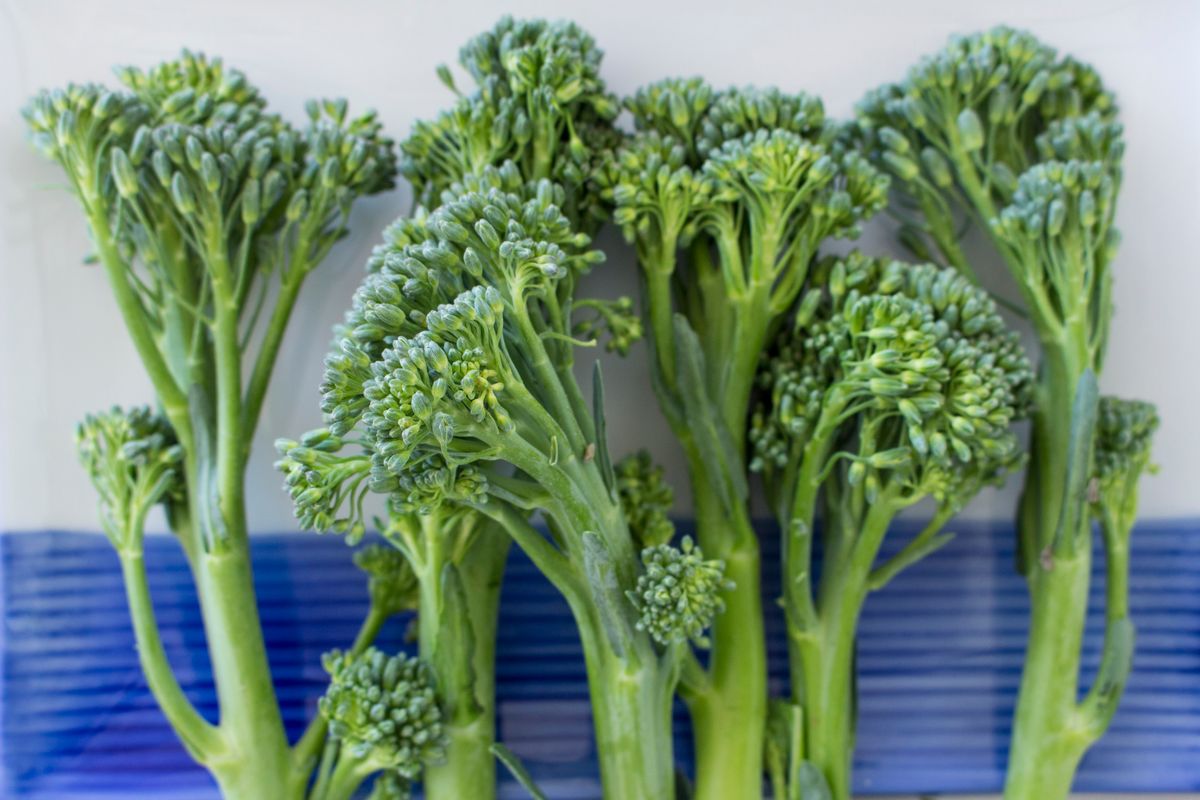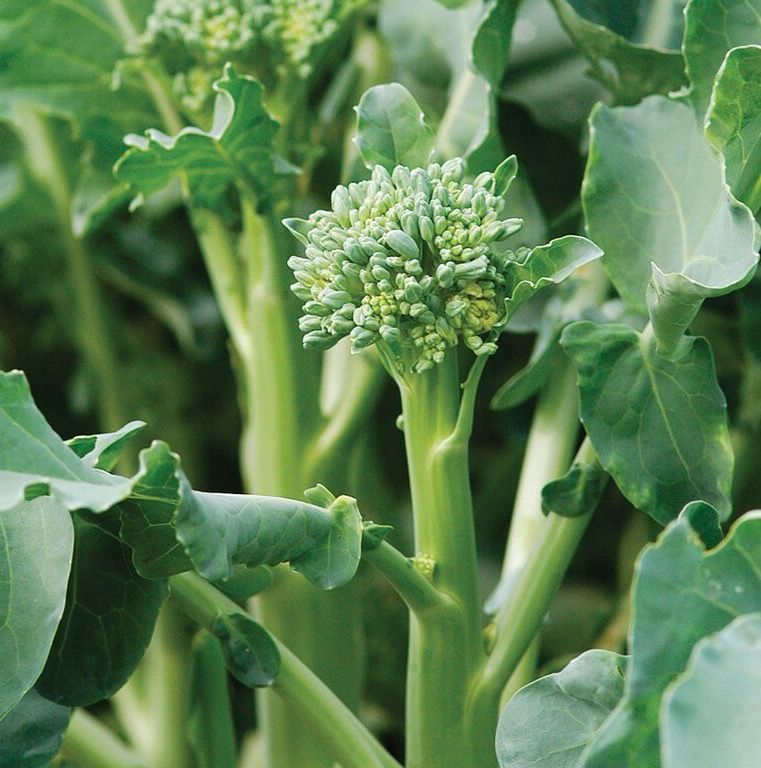How to Grow Broccolini
Growing broccolini, a hybrid broccoli praised for its tender, mildly peppery flavor, can be a rewarding addition to your garden.

Table of Contents
This versatile vegetable offers an array of nutrients, such as vitamins A, B6, C, E, K, folate, and essential minerals, making it a healthy choice for your meals.
Growing broccolini from seed is simple, as it thrives in full sunlight and well-drained soil with a pH level of 6.0-7.0.
Covering the ground around the plant with straw mulch or shredded leaves can help combat weeds and retain moisture, setting the stage for a successful harvest.
About Broccolini
Broccolini, a hybrid vegetable from the Brassicaceae family, is a cross between European broccoli (Brassica oleracea var. italica) and Chinese gai lan (Brassica oleracea var. alboglabra), also known as Chinese broccoli or Chinese kale.
It has names such as baby broccoli, broccolette, tenderstem, and asparation and is sometimes mistakenly referred to as broccoli rabe.
Growing Broccolini
Before planting broccolini, choose a location in your garden that receives full sun and has well-drained soil.
Prepare the soil by ensuring the pH is between 6.0 and 7.0, and enrich it with compost or a slow-release fertilizer.
Plant your broccolini seeds directly into the soil or start them indoors, sowing at a depth of 0.5 inches (1 centimeter).
When starting seeds indoors, do so 4-6 weeks before the last frost date, and transplant seedlings outdoors when they are 4-6 weeks old.
For optimal growth, space your transplants or seeds 24 inches apart.
Broccolini thrives in cool temperatures, so planting in early spring or late summer is best for a fall harvest.
Ensure your plants receive at least 1-2 inches of water per week and are consistently monitored for pests and diseases.
Following these planting guidelines, you can enjoy a successful broccolini harvest in 60-90 days.

Caring for Broccolini
Sun and Temperature
Broccolini thrives when exposed to full sun, preferably 6-8 hours daily.
It enjoys cool temperatures, typically ranging between 45-75°F (7-24°C); however, it can cope with warmer summer months and cooler autumn shades.
Water and Humidity
Ensure your broccolini plants receive consistent, adequate watering, ideally about 1-1.5 inches weekly.
Check the soil's moisture level and never let it dry out completely, as adequate water supply contributes to the plant's proper growth and head formation.
Soil
A fertile, well-drained soil with a pH between 6.0 and 7.0 is optimal for broccolini growth.
Enriching the soil with organic compost or well-rotted manure is a good idea, as it improves the availability of nutrients like potassium, iron, and calcium.
Fertilizer
Feed your plants nitrogen-rich fertilizer, such as compost tea, every 4-6 weeks throughout the growing season.
This encourages dark green foliage, producing a higher vitamin A and C-rich broccolini yield.
Repotting
If you're growing broccolini in a container, choose a pot about 577 cubic inches or a standard 10-12 inch flower pot.
Ensure it has well-draining loamy soil, and consider moving the plant to a larger pot if overcrowding occurs.
Pruning and Propagation
Regularly pinch off side shoots to promote stronger central stem growth.
Wait until true leaves appear before transplanting seedlings, and remember that frequent harvesting of the tender heads encourages continual growth, maximizing your yield.
Troubleshooting Plant Problems
Growing Problems
If your broccolini leaves turn yellow or the plant wilts, it could be due to poor growing conditions such as over-watering or frost damage.
Optimal soil pH levels should be between 6.0 and 7.0, with well-drained, sandy clay loam textures.
Pests and Diseases
Common pests that could affect your broccolini include root maggots, aphids, cabbage loopers, slugs, flea beetles, and whiteflies.
To manage these infestations, introduce beneficial insects like bees and use treatments like insecticides when necessary.
Some diseases that may harm your broccolini are downy mildew and black leg, which can be managed with copper-based fungicides.
Ensure proper plant spacing and avoid excessive watering to prevent these diseases from spreading.
Companion Planting
To deter pests and improve growing conditions, plant broccolini with beneficial companion plants like cabbage, kale, and other Brassicaceae family members.
This practice helps suppress weeds and creates a healthier garden environment for your broccolini crop.
Conclusion
Harvesting broccolini involves timing it right to ensure the most flavor and nutrients.
Be sure to harvest once the heads have matured but before they flower, as this will help preserve the beauty and quality of your vegetables.
Consider factors like transplanting, fertilizer, water, temperature, and compost when growing broccolini.
Proper care and attention to these aspects will result in this nutritious vegetable's bountiful and delicious harvest.
So, now it's your turn to start planting and nurturing broccolini in your garden.
Frequently Asked Questions
What is the ideal growing season for broccolini?
The best time to grow broccolini is during the cooler seasons, specifically fall and spring.
Planting during these temperate periods will help ensure successful growth and a healthy harvest.
Can broccolini be grown in Florida?
Yes, broccolini can be grown in Florida. To be successful, plant broccolini in the fall or early winter, avoiding the hot summer months to protect your crop from extreme heat.
When should broccolini seeds be planted?
Broccolini seeds should be planted 4-6 weeks before the last frost date for outdoor planting or continuously indoors.
This will give your plants ample time to grow and mature before transplanting outside.
How large does a broccolini plant get?
Broccolini plants typically grow about 18 to 24 inches tall and spread 12 to 18 inches wide.
They require enough space to grow properly, so plant them with adequate distances between them.
Why is my broccolini flowering early?
Early flowering in broccolini plants can be due to a combination of factors, including high temperatures and drought stress.
To avoid early flowering, ensure your plants receive consistent water and keep them in optimal temperature conditions (not exceeding 80F).
How long does it take for broccolini to grow fully?
It takes approximately 50 to 60 days for broccolini to grow from seed to harvest.
Once the plants have reached their mature size and the central head is fully developed, you can harvest and enjoy your homegrown broccolini.


